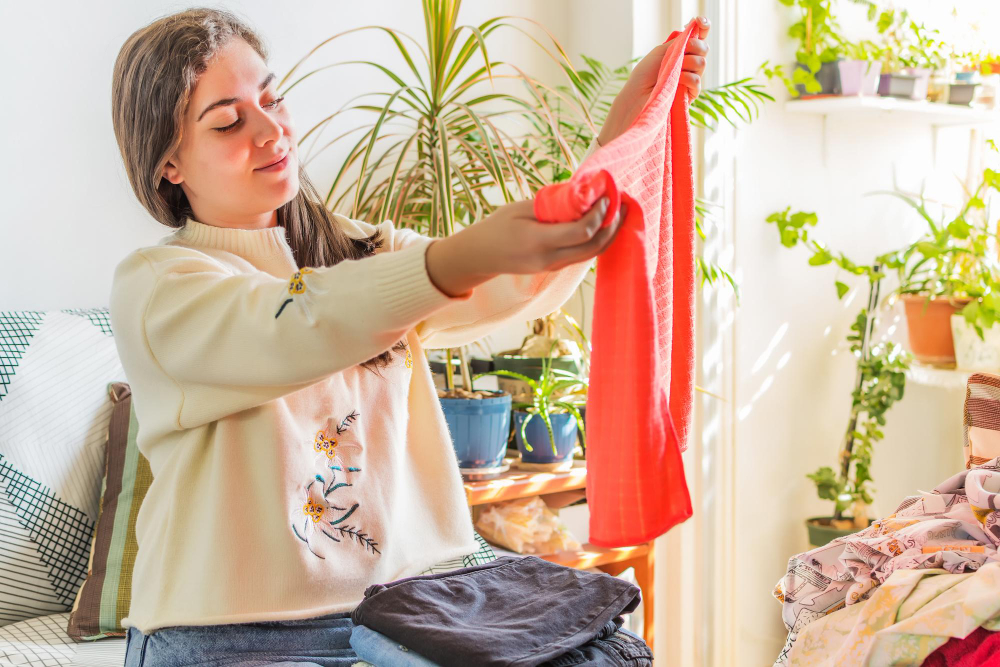
The fashion industry is the second-largest consumer of the world’s water supply. According to studies shared by the European Parliament, a single load of laundry containing polyester, nylon, or acrylic clothes can release up to 700,000 microplastic fibers. Additionally, less than half of unwanted clothes are collected for reuse or recycling, and only 1% are recycled into new garments. Despite these well-documented issues, the fashion industry continues to engage in widespread greenwashing. This blog will explore what greenwashing is and how you can make informed choices.
What is Greenwashing in Fashion?
Greenwashing is a deceptive tactic used by companies to present themselves as environmentally responsible. It involves companies jumping on the climate activism bandwagon to attract younger, more environmentally conscious generations. They achieve this by labeling their products as “100% Natural,” “Ethically-Sourced,” or “Environmentally Friendly.”
However, these labels often mislead the public. Consumers may believe these claims represent real solutions to addressing the climate crisis and other environmental issues, but purchasing from these companies often causes more harm than good.
Greenwashing Tactics to Watch Out For
There has been a drastic shift in consumer preferences recently. While cheap prices are in demand, the blatant destruction of the planet is no longer something consumers are willing to overlook. Fashion houses have noticed this change in attitudes. However, meeting these expectations requires adhering to stricter standards, undergoing inspections, and slowing down production. These measures increase costs, which ultimately affect profits. And fashion brands are unwilling to compromise on profits. So what do they do? They launch campaigns and initiatives that create the illusion of environmental responsibility while, in reality, they are simply pulling the wool over consumers’ eyes.
Consumers must learn how to identify greenwashing and make better decisions. The next sections will discuss how to make sustainable purchases without falling for misleading claims. If you’re a fashion brand owner, it will also provide guidance on sourcing clothes from ethical factories to avoid backlash and build trust.
-
Unverified Claims and Labels
We’ve all seen green labels like “Bio Friendly” and “100% Organic” on packaging or proudly displayed on company websites. However, these labels often lack the evidence needed to support their claims. What consumers should be looking for are certifications.
ISO, which stands for the International Organization for Standardization, is a globally recognized organization that develops standards to help businesses operate consistently and responsibly. ISO Certification displayed on a company’s website demonstrates its compliance with international standards for quality, safety, and sustainability.
Other important certifications include OEKO-TEX STANDARD 100, which ensures that textiles are free from harmful chemicals and safe for use, and LEED certification, awarded by the U.S. Green Building Council, which guarantees that facilities meet energy efficiency and sustainability standards. LEED certifications are ranked as Platinum, Gold, and Silver, with Platinum being the highest level of achievement.
-
Misleading Marketing Campaigns
Companies have repeatedly launched campaigns to portray themselves as caring about the environment. Two prominent fashion brands that have come under fire are H&M and Zara.
H&M is facing a class-action lawsuit alleging that it employs misleading environmental claims through its sustainability labeling and marketing. The lawsuit claims that H&M’s recycling program suggests old clothes are seamlessly turned into new garments when in reality, recycling solutions are either unavailable or not commercially viable for most of its products. Additionally, it points out that it would take H&M more than a decade to recycle the volume of clothing it sells in just a few days.
Zara faced a scandal in 2016 related to its “Join Life” collection, which claimed to be made from fully sustainable and eco-friendly materials. However, this was only a small collection, while the brand’s primary focus remained on rapidly producing clothes to keep up with shifting trends. This practice results in the creation of low-quality garments that are discarded just as quickly. Additionally, reports of human rights violations at various points in the supply chain have raised further concerns about the ethical standards of the fast fashion giant.
While it may be true that certain fashion companies have invested in green initiatives, the overall pollution caused by their operations completely negates these efforts. Despite this, these brands continue to create the illusion of eco-consciousness to profit off gullible consumers. Consumers must stay informed, critically evaluate such claims, and hold companies accountable.
-
Transparency Issues
Fashion brands often withhold critical information about their processes, making it challenging for consumers to assess their true environmental impact. Many brands fail to disclose where their fabrics are sourced, whether the factories they work with meet ethical and environmental standards, or how biodegradable their products are.
Reputable certifications, such as ISO, OEKO-TEX STANDARD 100, and LEED Certification, when found on their website or social media may indicate compliance with global standards. Another approach is to research the brand’s policies. Many transparent companies share downloadable sustainability reports on their websites, outlining their sourcing, manufacturing processes, and recycling programs. If a brand does not provide this information, it could signal a lack of accountability.
Finally, consumers can engage directly with brands by reaching out via phone calls, email, or social media to ask specific questions. Transparent companies are often willing to cooperate and provide evidence to support their claims.
Conclusion
If you’re a consumer aiming to make informed and sustainable choices, this blog provides the tools to identify greenwashing tactics and navigate misleading claims. By staying vigilant and making conscious decisions, you can contribute to protecting the planet.
For fashion business owners, exploring partnerships with top apparel sourcing companies in Bangladesh could be an excellent option. Many of these companies adhere to strict compliance standards and hold recognized certifications. Partnering with reliable manufacturers can help you avoid concerns related to human rights violations and poor working conditions while building a responsible and trustworthy brand.